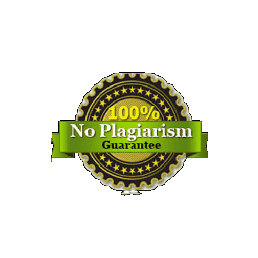Argumentative Research Paper and the Annotated Bibliography
Assignment for the
Argumentative Research Paper and the Annotated Bibliography
In this research paper assignment, you will argue for or against an issue raised in one of the
prompts below, supporting your position with evidence you obtain from your own interpretation
of the reading selection (s) as such reading(s) relate to the issue and from five researched
sources.
An Annotated Bibliography pairs with this paper, which will include annotated entries for each
of your five research sources. In an annotation you will provide the correct MLA Works Cited
entry and an annotation or summary of the source. More information is provided later in this
assignment sheet on completing the Annotated Bibliography. You will want to print out page 6
of this assignment that shows the many due dates of the component assignments with this
Research Paper Assignment (including the Annotated Bibliography). But first, let us review in
detail the Researched Essay assignment.
Research paper
Word Count: 1750 minimum (or about 5 pages excluding a Works Cited page)
Final Draft is due no later than 11:00 PM November 22
This paper has two components:
1. Argumentative: develop your stance on the issue in the prompt;
2. Research: refer to a minimum of five acceptable outside research sources (not
including the literary sources or primary literary texts) to give the history of and
support for or refutation of your stance on your argument. A minimum of three of the
outside research sources must be taken from the HCC Library Databases; the other
research sources must be from acceptable sources.
You will need to include direct quotations and paraphrasing from your five acceptable
research sources (three of which must be from the HCC Library databases) and cite these
correctly in MLA 8th edition format. Absent or incorrect citations will severely affect your grade
on this researched essay assignment.
Go beyond simple arguments and research to explore the issue you choose from an original,
insightful angle. Attempt to achieve complexity and boost your ethos by addressing other
perspectives on your issue, employing either a counter argument or a refutation.
Here are the prompts (topics) from which you are to choose one to research, finding a minimum
of three articles from HCC Library online databases, and then two other acceptable sources
2
which may or may not be from the databases, to use in writing your Annotated Bibliography and
Research Paper (Please note, your research sources do not include the literary works
themselves):
1. The one act plays “POOF!” by Lynn Nottage (p. 743) and “Trifles” by Susan Glaspell
(p. 732) deal with the subject of spousal abuse yet in very different ways in different time
periods. For instance, in “Trifles” the audience never sees the wife on stage who was
allegedly abused by the husband; conversely, in the one act play “POOF!” the abused
wife is one of the two characters shown on stage. In this topic I ask that you explore the
idea of spousal abuse, and how it is presented in both plays. Some of the questions you
may want to explore are: What are the forms of spousal abuse and how are these explored
on the plays? What is the common theme of these plays? Do you think such a theme is
effectively addressed in both plays? If not, which play more effectively addresses the
theme and why? There is a time difference in the setting of each play; does this difference
in time frame impact the effectiveness of the delivery of the main idea? How have public
opinions about spousal abuse changed over time? What is the role of female camaraderie
in each play, and what role might a support system play in an abused spouse confronting
and dealing with an abusive relationship?
2. The play “Trifles” (p. 732) is based upon a real murder in the early 20th century, and the
actual murder that was reported in a local paper by Susan Glaspell who was the reporter
for the newspaper. Glaspell also wrote the short story “A Jury of Her Peers” about the
actual murder. Research the basis of the play “Trifles” and argue that the play (and
maybe the short story) do or do not adhere to the actual details of the real-life murder;
and if the play strays from the actual details of the murder, argue how and why. Also,
was justice served in the play and/or the trial of Margaret Hossack?
3. The one act play “The Table” is based on the idea that the evidence required for
adjudication of war crimes carried out against the Jewish people during WWII should not
be that the same as for other crimes because the witnesses to the crimes related in “The
Table” cannot recall the incidences similarly; in other words, the residents of the town
terrorized by the Nazis are unable to corroborate the testimony of each other. There are
several ways to approach this topic. One idea is to research war crimes against the
Jewish population in Europe during WWII and how the play “The Table” presents the
nature of and problems with exposing such crimes. Another idea might be to explore the
criminal justice system as it relates to how war crimes are adjudicated or how war
criminals are found and brought to trial or how the rules of evidence play out in our
criminal justice system.
4. Explore the theme evil in literature modern story such as “A Good Man is Hard to Find”
by O’Connor (p. 1007) and/ or “Where Are You Going, Where Have you Been?” (p.
1016) and argue these stories are effective exemplifications of the theme of evil in
3
mankind. Do you agree that the nature of man is indeed evil? Argue that research
supports or does not support that society today is becoming more violent, evil, and
hateful. You may use Desmond’s article on p. 1011 “From ‘Flannery O’Connor’s Misfit
and the Mystery of Evil’” or the Bandy essay on p. 1008 as one of your five sources if
you write about O’Connor’s “A Good Man is Hard to Find.”
5. The short story “Where Are You Going, Where Have You Been” by Oates (p. 1016) is
another example of a literary work whose plot and character ideas are based upon a real-
life crime event. Research the real crime event from which the author relied for her
perspective in creating her plot and characters, describe these real-life crime event, and
argue that Oates effectively utilized true events to create her plot and characters. You
may use Moser’s article beginning on page 1030 “The Pied Piper of Tucson: He Cruised
in a Golden Car Looking for the Action” as one of your five sources.
6. As relates the short stories “The Ones Who Walk Away from Omelas” and “The
Lottery,” what is the meaning of the “social contract” and how does such a theory relate
to the two short stories? In this topic, you would research information about the meaning
of the social contract theory and how it is or is not exemplified in the two short stories.
You may use one of the arguments either by Brooks (p. 773) or Ehrenfeld (p.775) as one
of your five sources.
7. The concepts upon which Puritanism is based are central to the stories of Nathaniel
Hawthorne. Research Puritanism and argue how these concepts are exemplified in the
short story “The Minister’s Black Veil.” You could also explore Hawthorne’s inspiration
for the short story “The Minister’s Black Veil” and, in particular, the truth to the basis for
the story being an actual event/person.
8. In Eudora Welty’s short story “A Visit of Charity” what is the picture of the care for the elderly in the United States? Is this a reasonable representation of an elderly care
facility? You may want to research the societal framework for the care of the elderly
today, as it has progressed since the establishment social welfare programs such as Social
Security and Medicare, and the economic feasibility and survivability of these programs.
With the “graying of America,” are we positioned as a society to care for the growing
elderly population given the aging of the Baby Boomer Generation? Also, you may want
to consider the impact of the COVID-19 virus on care for the elderly in the United Sates.
(For instance, the added isolation of the elderly in nursing homes and assisted living
communities). Will the Coronavirus change elderly care forever in the United States?
9. There are four short plays by Susan Glaspell in Canvas located in the Week Seven Module (and at this website http://www.gutenberg.org/files/10623/10623-h/10623-
h.htm). You may want to explore the life of the playwright and her other works as
presented in Project Gutenberg to see how she develops her characters, plots, and themes
in consideration of the timeframe of her compositions. If you want to consider this topic,
please discuss with me. This would be quite an interesting project which would give you
4
significant freedom of design. If you are interested in this project, please get in touch
with me because I would be really interested in seeing some research and writing on this
topic.
*** 10. Finally, I offer an open topic concerning the genre of poetry even though we have
yet to study this genre in our class. If you are interested in writing about poetry, please
email me. We will discuss some acceptable ideas about which you may want to write.
Once you select a topic, then find five acceptable research sources to use in writing your
argument. Three of your five research sources must come from the HCC Library Databases. The
other two research sources must be taken from acceptable resource sources. Please note: Your
research sources do not include your primary literary sources. You may want to consider
the opposing side of the argument, so one of your sources may need to address the refutation of
your argument. Also, consider perhaps using a biographical source for the author of the literary
piece or pieces about which you are writing, if applicable, or a discussion and application of
which you may include in your paper.
You will be Graded On:
✓ Fulfilling the paper Assignment:
• Have you written an argument addressing your chosen topic,
presenting and effective and engaging thesis statement in the first
paragraph?
• Is there adequate research (minimum of five sources)?
✓ Sources:
• Do you include at least ten direct short quotations correctly cited
from your five sources? Do not use quotes longer than 4 lines.
• Are your five research sources relevant to your argument? Do
you correctly interpret your sources and make good use of them?
• Are your five sources good sources for an academic essay?
• Are at least three of your sources obtained from the HCC Library
Databases?
✓ Scope and Completeness:
• How well have you argued your points?
• Are your interpretations solid and your arguments well-reasoned
and supported with relevant evidence from credible sources?
• Do you address a counter-argument or alternate interpretation?
• Do you meet the 1750 word minimum? Or five page minimum?
✓ Organization:
• Is your essay’s arrangement logical and purposeful, with a well-
developed thesis and thorough support?
✓ Writing Quality, tone and presentation:
• Is your grammar correct with no major sentence errors?
5
• Is your writing style clear, compelling and readable?
• Is your essay written in correct MLA format using 8th edition MLA
format for the citation of Works Cited entries?
• Are parenthetical (in text) citations cited correctly?
• Have you achieved a formal and reasonable tone expected in an
academic essay?
Things you need to do before Submitting your Paper
1. Use Times New Roman, 12-point font, and double space. Do not skip an additional
double space between paragraphs;
2. Carefully Proofread and Spell check your paper. Submit your research paper to the tutors
well in advance of the due date of the paper. There will be two Rough Draft Submissions
before you submit the final draft;
3. Include proper MLA Heading with Your Name, My Name, English 1302 and the Date.
4. Include a Header with Your Last Name and the page number on every page.
5. Have a creative and engaging title!!!
6. Upload an electronic copy of your paper in Canvas by the due date. No late papers will
be accepted unless you follow the policies and procedures outlined in the Syllabus. If you
do not upload a copy of your paper in Canvas by the due date, and you have not
contacted me to present a well-documented excuse and to make alternate arrangements
for submission of the assignment, you will receive a grade of zero on the Research Paper.
Please refer below and to your Calendar of Assignments for the Due Dates of the individual
components of your Research Paper, including the Summary of One Source (which we will
discuss next). the Annotated Bibliography, the Outline, the first Rough Draft, the Second Rough
Draft, and the Research Paper. The due date for submission of your Research Paper is no later
than 11:00 PM Sunday, November 22. No late papers will be accepted unless you follow
policies and procedures stipulated in the Syllabus.
6
Due Dates of the Research Paper & Annotated Bibliography Components: Please see the
Calendar of Assignments for instructions on Submission of the following components-
• Topic Selection Due: You will write about your topic selection in Discussion Five due
no later than 11:00 PM Sunday, October 11;
• Summary of first Source for your Annotated Bibliography (explained below): due no
later than 11:00 PM Sunday, October 18;
• Summary of your Second and Third sources: due no later than 11:00 PM Sunday,
October 25;
• Annotated Bibliography due no later than 11:00 PM Sunday, November 1;
• Preliminary Research Paper Outline and Works Cited page due no later than 11:00
PM Sunday November 1;
• 1st Rough Draft of Research Paper due no later than 11:00 PM Sunday, November 8;
▪ Professor Conferences via Webex Week Eleven prior to 1st Rough Draft Submission
• 2nd Rough Draft of Research Paper due no later than 11:00 PM Sunday, November 15;
▪ Professor Conferences via Webex Week Twelve prior to 2nd Rough Draft Submission
• Research Paper due no later than 11:00 PM Sunday, November 22;
▪ Professor Conferences via Webex Week Thirteen prior to Research Paper Submission
7
Annotated Bibliography
&
Summary of One Source
Summaries of Second and Third Sources
Annotated Bibliography Word Count: 1000 Word minimum (or 200 words per
source) in about a total of three to three and a half-typed pages)
Annotated Bibliography Due no later than 11:00 PM Sunday, November 1
Annotating means “marking up.” When you annotate a text, you make notes on the text;
therefore, an Annotated Bibliography is a bibliography with notes. It requires that you
evaluate and synthesize the information from the five research sources you have located
and which you will be using to support (or perhaps refute) the argument you are making
in your paper.
For your Research Paper assignment, you will locate a minimum of five sources in
support of your argument, three of which must come from the HCC Library Databases.
Once you locate the sources you want to use, you can have these sources emailed to
yourself. Read the sources carefully, making marginal notes on the copies of the sources
(I recommend you print out the sources) identifying the author’s thesis and major points,
(and perhaps highlight possible short quotations you may consider using in your paper).
Then write the correct MLA 8th edition citation on the top page of the source. Now you
are ready to write an annotation for each source. Organize your sources alphabetically
because an Annotated Bibliography presents the sources alphabetically.
Each annotation should include:
1. The correct MLA Words Cited entry 2. A summary of the article’s thesis and major points 3. Your evaluation of the source’s thesis and major points 4. Your thought on what the material contributes to your argument 5. Each annotation should be a minimum of 200 words in length or about
¾ of a typed page.
6. Follow the same “Things you need to do before submitting your paper” as for your researched essay above (except for #5 because your
title will be Annotated Bibliography”)
Do not include any quotations in your annotated bibliography. This assignment must be
entirely in your own words. Do not include any source that is not useful to your argument. I
know you will read many more sources than the final ones you decide to use in support of your
argument. And don’t forget to put your annotations in alphabetical order.
You will be Graded On:
✓ Fulfilling Assignment
8
• Does each annotation provide a summary of the article’s main points, comment on the sources’ usefulness and connect with its
contribution to the development of your argument?
• Is there adequate research (five annotated source minimum)? ✓ Scope and Completeness:
• Does each annotation meet the minimum word count (200 words)?
• Do you include only sources that you will use in your paper?
• Does each annotation address the article’s thesis and major points?
• Does each annotation comment on how the source will be used in your essay?
✓ Organization and Presentation:
• Is each annotation presented in a separate paragraph paired with a correctly formatted MLA citation?
• Is each annotation presented in “hanging paragraph” indentation? That is, are all lines of the annotation other than the first line indented?
• Is the Annotated Bibliography presented with the correct MLA header and heading with the title “Annotated Bibliography” and your Preliminary
Research Paper Title?
✓ Writing Quality and Tone:
• Is your grammar and punctuation free of errors?
• Is your writing clear and readable?
• Is your tone formal and your style engaging?
Remember: If I do not receive the electronic copy of your Annotated Bibliography in
Canvas by the due date, you will receive a grade of zero on the assignment. No late
papers accepted unless you adhere to the policies and procedures stipulated in the
Syllabus.
• Your Summary (annotation) of One Source is due later than 11:00 PM Sunday, October 18. This Summary of a Source (one of the five research sources you will use in
your Research Paper) should be a minimum of about ¾ of a page. Remember to include
the correct bibliographic entry at the topic of the summary. There is a Student Sample of
a Summery (annotation) of a Source in Canvas and a copy of one is included below;
• Your Summary (annotation) of your Second and Your Summary (annotation) of Third Sources: due no later than 11:00 PM Sunday, October 25;
• Your Annotated Bibliography is due no later than 11:00 PM Sunday, November 1.
9
Here is a Sample Summary (Annotation of a Source):
Summary of One Source
Bryan, Patricia L. “Stories in Fiction and in Fact: Susan Glaspell’s ‘A Jury of Her Peers’ and the 1901
Murder Trial of Margaret Hossack.” Stanford Law Review, vol. 49, no. 6, 1997, pp. 1293–
1363. JSTOR, HCC Library Database, Date Accessed: 07 March 2019.
Professor Bryan’s article is an effective summary and comparison of Susan Glaspell’s
short story, “A Jury of Her Peers” and the John Hossack murder on which the short story is based.
The article includes a complete analysis of the trial, conviction, release, and retrial of the
Hossack’s wife, Margaret. Despite the defense’s efforts to block testimony regarding the couples’
marital discord, the trial court ultimately sided with the prosecution and allowed the testimony of
several neighbors. It was determined that Margaret Hossack endured years of physical abuse by
Mr. Hossack, yet undeterred by his brutal nature, the community still felt that Mr. Hossack was a
“good” man and held him in high regard. Mrs. Hossack made numerous attempts to reach out to
neighbors for help, but she was repeatedly rejected, chastised, and returned to her husband. She
had no support from friends or community and was left with no other escape than justifiable
homicide. The defense’s narrative was deliberately shaped in a way that was thought to be more
palatable for the all-male jury, and thus the truth was never heard. One-year post-verdict, the
conviction was overturned because of procedural errors by the trial court. The second trial ended
in a hung jury, and Margaret Hossack was never convicted nor acquitted of the crime.
Professor Bryan’s article can be useful to address key issues in my paper: Is justice
possible if public bias prevents an empathetic approach to a complex issue? Her side-by-side
comparison of fact and fiction exposes the far-reaching consequences of the patriarchy’s
continued efforts to oppress women through the exploitation of gender roles and factionalism.
10
Before you begin your Research, please read over the following information:
Finding and Evaluating Sources (MLA)
Many writing assignments in the humanities require the use of outside sources. Sources can
include information from books, articles, Web sites, videos, and more. The quality of your
project will often depend on the quality of its sources. Therefore, it is important to use the most
reliable, authoritative sources you can find.
Where should I start? Start with the resources in your college library. Libraries can save you
time by weeding out questionable sources and pointing you toward relevant, scholarly ones. In
addition to print collections, college libraries subscribe to a large number of databases that you
can access for free. The information in library databases comes from identifiable and
professionally edited sources, often from experts in the field.
Can’t I just use the Internet? That depends on the quality of the information. Although there is a
vast amount of information on the Internet, it is not always possible to determine where the
information came from, who wrote it, or whether it is completely accurate. Web sources can
provide valuable information, but they require careful evaluation.
Evaluating Internet Sources
As you research, take the time to evaluate each source by assessing its authorship, sponsorship,
purpose, audience, currency, and level of objectivity.
Authorship
• Who wrote the information? Usually, if a source is trustworthy and reputable, then the
author’s name and qualifications will be prominently displayed.
• You may find that no single person is responsible for the content on a Web site. Instead,
there will be a sponsoring organization, and the site will likely include an “About Us”
section describing the organization’s membership, sponsorship, and purpose.
• Are you reading firsthand information? Primary sources are original documents such as
field research reports, laboratory studies, letters, and diaries. Secondary sources are
commentaries on primary sources. A primary source is not necessarily better than a
secondary source, but it has the advantage of being a firsthand account.
Publisher or Sponsorship
• Who is the publisher or sponsor of the source you are using? Is the source known for its
integrity?
• Sources generally considered trustworthy include well-respected news outlets and
professional organizations, university and government-sponsored sites, and peer-
reviewed academic journals.
11
• Open-sources sites, sites that are self-published, and sites that seem extremist or
promotional in nature may be unreliable. If you’re unsure, check the source of the
information and look for documentation.
Purpose and Audience
• Consider why the piece of writing was created: To argue a position? To sell a product?
To inform readers?
• What does the domain name indicate? For example, an .edu extension indicates a
university site, and a .org extension generally indicates a noncommercial organization.
• Who is the intended audience? Other academics? The general public?
Currency
• How current is the information? In the humanities, sometimes the most authoritative
works may be older ones. More recent sources may be useful for determining the current
conversation about a topic.
Objectivity
• An author’s overall stance, or perspective, affects the presentation of information and
your reaction to it. Therefore, it is important to read between the lines to understand the
author’s position on an issue. What is the author’s point of view? How opinionated does
he or she seem?
• Does the author or publisher have political leanings or religious views that could affect
the way the material is presented?
• How fairly does the author treat opposing views?
• Does the author’s language show signs of bias? The existence of bias doesn’t prevent you
from using a source, but the author’s bias does affect the presentation of information (and
sometimes a writer may be too biased to be credible).
You Need a Professional Writer To Work On Your Paper?

Have any Assignment?








